#popular north indian food
Explore tagged Tumblr posts
Text

It's Poll Time
Vote for the Best North Indian Food of 2024 and win coins to unlock vouchers.
#best north indian food#best north indian food of 2024#top north indian food#favourite north indian food#popular north indian food#plutosone
0 notes
Text
Paneer Butter Masala Recipe – How to Make Delicious Paneer Butter Masala at Home
Paneer Butter Masala Paneer Butter Masala, a popular Indian dish featuring paneer cooked in a luscious tomato-based gravy with aromatic spices.Paneer Butter Masala (Paneer Makhani, Butter Paneer) is one of the most popular Indian curries served worldwide. It is a rich and creamy curry where paneer cubes (Indian cottage cheese) are simmered in an onion tomato gravy. This is one of the most…
#Authentic Paneer Butter Masala#Best Paneer Butter Masala recipe#Butter Paneer#Creamy tomato gravy#Easy Paneer Butter Masala recipe#Homemade Paneer Butter Masala#How to make Paneer Butter Masala#Indian cottage cheese recipes#Indian food recipes#Indian Vegetarian Curry#North Indian Cuisine#Paneer Butter Masala#Paneer Butter Masala with basmati rice#Paneer Butter Masala with naan#Paneer curry recipe#Paneer Dishes#Paneer in tomato-based gravy#Paneer Makhani#paneer recipes#Popular Indian dishes#Restaurant-style Paneer Butter Masala#Rich and creamy Paneer Butter Masala#Spicy paneer recipes#spicy veg recipes#Traditional Indian cooking#Vegetarian dinner ideas#Vegetarian Indian dishes
0 notes
Text

Best Restaurant in Little India Singapore | kailashparbat
Best CHAAT brings the delicious food and popular classics of north India to the restaurant table—authentic flavours reimagined and elevated at kailash Parbat.
#pani puri restaurant#chaats online shopping#Best Chaats in Singapore#chaat dining#Best Chaats in Little india Singapore#chaat restaurant#Best Banquet in Little India Singapore#Best Vegetarian Catering in Little India Singapore#Good Vegetarian Catering in Little India Singapore#Best Restaurant in Little India Singapore#Good North Indian Restaurant in Singapore#Good Restaurant in Little India Singapore#Best North Indian Restaurant in Singapore#Authentic Indian Restaurant in Singapore#Good Indian Restaurant in Singapore#Best Indian Restaurant in Singapore#Popular Indian Food Singapore
0 notes
Text
https://www.travenix.com/best-north-indian-foods-popular-hyderabad/
Indulge in mouthwatering North Indian delights! Hyderabad offers iconic dishes like Rajma Chawal, Chole Bhature, Paneer Tikka, and Dal Makhani
#North Indian Food In Hyderabad#authentic hyderabadi recipes#hyderabad traditional food#hyderabad famous food items#must try food in hyderabad#famous food of hyderabad#popular food in hyderabad#hyderabad indian restaurant near me
0 notes
Text
The Delicious World of Indian Vegetarian Food
The Delicious World of Indian Vegetarian Food
Indian Vegetarian Food is one of the best food in the USA for those people who love the food. So For many vegetarians curious about Indian food, there can be no better introduction than the infinite variety of sumptuous vegetarian dishes on offer. Indian Food Vegetarian – Best Recipes From stimulating regional cuisines such as South Indian and North Indian to the more cosmopolitan flavors of…
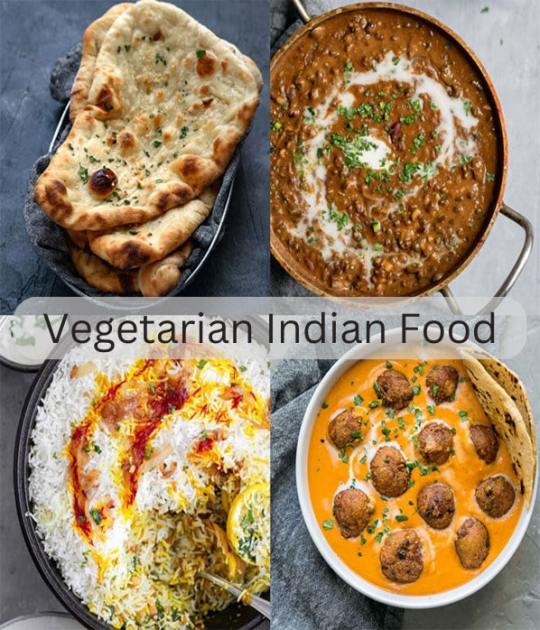
View On WordPress
#indian vegetarian food near me#north indian vegetarian recipes#popular vegetarian indian dishes#south indian vegetarian recipes#vegetarian indian dishes list
1 note
·
View note
Text
A culture post for the girlie pops (and non-girlie pops) looking to write Pavitr Prabhakar accurately.
(P.s- I’m Indian and live in India and have been to Mumbai multiple times so shhh- )
(P.s.s- all i know about the spider verse comes from the movies so I’ll be focusing more on the Indian aspect. )
So in honour of atsv coming on Netflix-
FOOD- Pavitr live in Mumbai (mumbattan) so he probability of him eating “butter chicken or naan” (traditionally north Indian dishes) on a daily basis is almost nonexistent. (This is not to say he won’t have them occasionally but much of what people think is indian food comes from stereotypical North Indian food, pavitr lives in South Indian)
Popular food of Mumbai includes- vada pav(street food), panipuri(another street food), pav bhaji (not a street food), bhelpuri and sevpuri( you guessed it a street food) and for more every-day food- we have dal-roti or dal-chawal etc
(Edit: I forgot to mention this but, a lot of people are vegetarian either by choice or by religion and don’t eat meat (eating beef is HEAVILY and i mean heavily frowned upon.)
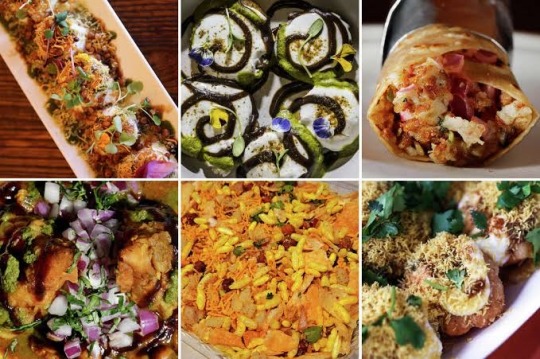
SCHOOL- In india we don’t have middle school or high school, we have grades.
We also have public and private schools (and unlike the USA, private school is not for the uber rich, middle-class families typically send their kids to private school and government(or public) schools are basically free or really cheap). Thus, Pavitr probably studies at a private school.
Keeping that in mind, Students from grade 1-12 study in one building and students actually sit in the same class while the teachers move from class to class. There is also something called school boards but for all our sakes, he studies in a school that follows CBSE guidelines. Now according to google, he’s around 15-16 so he’s in 10th or 11th depending on the school he goes to.
We have these really important exams called the “board exams” ( we just call them ‘boards’) And they are given twice by the students once in the 10th grade and once in the 12th grade and these are like really really important, kinda think of them as psats or sats(lmk if anyone wants to know more about boards) and if he’s in 10th he’ll be giving the boards in May.
After which he’ll pick a stream (medical, non-medical, commerce or failure) that he’s gonna study in 11th. There is a lot of emphasis on studies in India ( if you get good marks in 10th it’s considered that you’re good or ‘set’ for life but thats kinda bs) and it’s really competitive, students often go to tuition (think of them as an after-school school) for hours after school. Maths and science tuitions are the most common.
Uniforms (a half-sleeve shirt with a tie and pants or knee length shorts for guys) are also mandatory and are strictly regulated along with hair and nails. (Two braid or plaits for girls with below the shoulder hair and typically short hair for guys that have to be oiled) so im assuming that he gets called out a lotttttt about his hair, and teachers are constantly on his ass about cutting it which I think is funny af. The school timings are typically from 8-3 and tuitions are typically from 4-7.
It would also be super-cute if his aunt massaged his hair with oil (it’s considered an act of service and something people do to show their love)
10th grade especially is really really stressful in india and if home-boy cries himself to sleep every night I wouldn’t be surprised. So make him supppeeerrrr strrreeeessssed.
Name- Pavitr “Prabhakar” is a Hindu( a religion of sorts) name.
It’s derived from the Sanskrit word “prabhākara” which means “light maker” (from prabhā 'light' + -kara 'causing'), an epithet of the sun. So to those saying he’s a sunshine boy, his surname means light maker (do with that what you will).
Now, for his first name “Pavitr” however there is no exact meaning as, the name is most probably derived from Pavit ; maybe Pavitra(a typical girl’s name) if you’re pushing it. The meaning of Pavit is Love or A lovely and pious individual.
Edit: apparently pavitr does have it’s own meaning and it means pure
So his name roughly translates to lovely (edit: pure) sunshine boy.
Transport- Now i know that he’s spider-man but when he’s not, the most common way to travel in Mumbai is by an automobile (also called auto or auto-riksha).
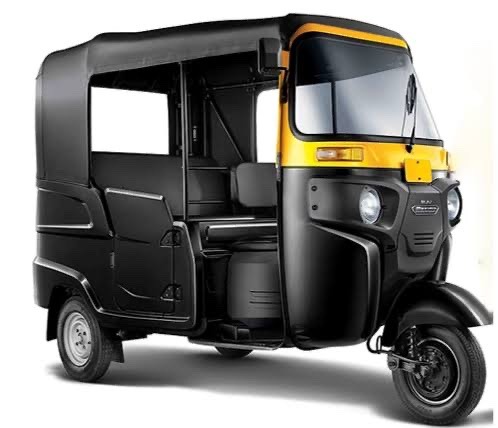
One of these things ^^ and these ‘go by the meter’ (you basically pay for the distance you have covered and a meter calculates this.) these things are everywhere. You call for one of these by raising your hand and an auto stops in front of you and you ask if they will take you to the place you wanna go to (“bhaiya, _____ lekar chalo ge?”)
There can only be 3 people max on one auto (not including children) as per local government policies.
Another common way to travel is by the subway or local trains. ( and contrary to popular beliefs they are not filled to the brim with people). Cars are not that common as there is a lot of traffic. Like a lot.
Language- Most indians speak at least 2-3 languages- English, Hindi and a local language or two. Since they’re in Mumbai Pavitr probably speaks Marathi. Some people also know Sanskrit (but that’s not that common nowadays).
(Edit: People typically don’t speak in just one language, they typically use a mix of atleast two or three languages which change according to the region they are in. For example- English and hindi is the most common but some may mix in their regional language or dialect)
Also spider in hindi is makri (makdhi?) so i think it would be super funny if people called him makri (makdhi?) man.
People in India also curse a lot (not in English though) (though not in front of parents obviously) and the more people get angry the stronger accent the becomes.
Housing- housing in Mumbai is super expensive, and most people live in flats or apartments rather than houses, Mumbai is considered to be one of the most expensive places to own a home in the world just because of the sheer number of people there.
All flats in mumbai have air- conditioning units in them because it. is. so. humid and winter lasts for a month or two in comparison.
Culture- Mumbai is kind of regarded as one of the culture hubs of India, a lot of up and coming artists along with famous superstars live in Mumbai. There are a lot of exhibitions, shows and whatnot happening all the time.
Mumbai is also more progressive then the rest of India and pride parades do happen here but there is still a lot of stigma around it
(Edit: PDA in public is almost taboo, doesn’t matter who anyone is—kissing in public might actually land you in jail)
Teens typically wear jeans, shorts and graphic tees rather than kurtas or salwar-kamez (traditional clothing) .
Traditional clothing is typically worn on festivals such as holi( the festival of colour( some people wear white suits and kurtas)) or Mumbai’s most celebrated festival- “Ganesh Chaturti” (which is a religious festival religious festival to honour the Lord Ganesha.
Sports- cricket is the most watched sport in India a lot of kids play it on the streets or in parks and gardens, and its an India vs Pakistan match is an event in which everyone in the family (some even invite friends over) sit together and yell at the tv.
Mumbai is a city in which time stops for no one, and people are super busy. This doesn’t mean that people there are rude in fact they are some of kindest and helpful ppl you’ll ever meet(not including the obligatory rude af asshole that are in every community) especially in a city that never stops.
India is also not a country that lives in rags we used to be called sone ki chidiya (or bird made of gold) before the British Invasion so please for the love of god don’t depict everyone living in slums and poverty. The national currency is rupees and again i cannot stress this enough even though there is poverty in india, that doesn’t mean there isn’t prosperity. India is a developing country so keep that in mind while you write.
Religion and caste - This is a very touchy and sensitive subject in India and you should probably research a lot or stay clear of it in general ( especially the caste system its messed up and just stay clear of it) but Gayatri’s father is Sikh or at least punjabi so I’m assuming she is too. ( if she’s from Punjab or its surrounding area, then she probably speaks punjabi or her father most probably does).
(Edit: there are a lot of different religions in india —almost too many to count— and every single one has their own gods, prayers and rituals so please please please research before you write)
But something all Indian (boys) are taught to do is to touch their elders feet to show/ask for respect (and “ashirwad” I don’t know what this translate too directly in English but think of it as blessings)
Anyways here is a not very brief overview on mumbai and pavitr , let me know if you have any questions or if something isn’t really clear, English isn’t my first language so I apologise for the errors.
Please feel free to ask me anything ill do my best to answer back. : D
if you actually find this long ass post helpful and write a fic or something please tag me i would love to read it.
#atsv pavitr#no one asked for this#but here you go#India#i love him so much#spiderverse pavitr#spiderverse#pavitr prabhakar#culture#mumbai#mumbattan
428 notes
·
View notes
Text
Thinking About QL Fandoms and Markets For Indian Queer Media
Alright, ::rubs hands together::, let's see if this old auntie can get the link history of this thread straight first.
@impala124 originally wrote in an ask to dear @lurkingshan about Shan's thoughts on a developing fandom for Indian queer media.
Shan subsequently asked a few of us on the internet, brown Asian and/or otherwise, to weigh in, which @starryalpacasstuff did here. Starry's piece has a few great reblogs with media resources that everyone should scurry to check out.
The inimitable @neuroticbookworm then decided to show us her literary Tae Bo skills and dropped an absolute MONSTER of a must-read regional media and industry analysis here. (Let me emphasize that this is a MUST-READ PIECE if you're interested in Indian media.)
I'm going to use NBW's piece as a reference throughout my weak-ass response tea here, because she covered almost everything that needed to be said about why there ISN'T a robust or developed fandom on the internet for Indian queer media. So go read that first, and if you forget to click back here, it's all good, because I'm just gonna offer some unorganized macro-level thoughts at this point.
****
I'd like to first amplify a number of themes that @neuroticbookworm made clear in her piece about the "media industry in India." I'm only putting that phrase in quotes not because NBW wrote it (she didn't), but because it's a wholly inaccurate phrase.
1) INDIA IS *NOT* A SINGLE, UNIFIED CULTURAL MONOLITH. Remember your early social studies classes on early civilizations? The Aryans, Harappa, Mohenjo Daro? Those specific civilizations arose in the north of the Indian sub-continent, and not a lot of social studies spaces outside of Indian classrooms give love to the other regional areas in India -- like, say, all of South India, hello -- that belong to other civilization definitions.
To be grossly overgeneral, ancient civilizations in the northern subcontinent were known as Aryan civilizations, while those of the southern subcontinent were known as Dravidian civilizations. We see these differences today in the food we brown people eat, and ESPECIALLY in the languages we speak. Tamil (a Dravidian South Indian language) couldn't be farther away from Hindi (a North Indian language emanating from Sanskrit).
2) While the prominent political nationalists of India (😐) would like to have you believe that all Indians are monolithically similar -- or rather, SHOULD be monolithically similar by way of all Indians speaking Hindi, consuming Hindi media, and erasing religious diversity (🤬) -- nothing could be farther from the truth of our incredibly diverse and complicated subcontinent. We Indians are regionally, and therefore culturally, diverse in a great myriad of ways, way beyond our food, language, and religious preferences.
[For my non-Indians and non-Asians reading this, think about the two dishes you see the most on Indian restaurant menus outside of India. Chicken tikka masala and tandoori chicken, right? That's typical "Indian" food to the untrained eye. CTM is a British dish borne from immigrant South Asian chefs; and tandoori chicken was created by North Indian Punjabis. My own Indian origins are half-half (lah), I'm half-South and half-North Indian (with some SE Asia thrown in there, boleh!). My brain fucking freezes when I speak to someone who thinks the extent of "Indian food" is CTM and TC, and I have to explain, for the millionth time, the basics of the incredible array of South Indian vegetarian food that I grew up eating and loving.]
Thus, what I'm trying to say is, when we say the word "INDIAN," there are some questions that a curious listener should be tuned into asking to get specifics about just what kind of "India" or "Indian" the speaker is speaking of. I'll often get the question, "but WHERE in India are your parents from," from tuned-in Asians, who want to know specifically about my regional background.
VERY SO OFTEN IN POPULAR DIALOGUE ABOUT "INDIAN MEDIA," THE UNDERLYING ASSUMPTION OF THE CONVERSATION IS THAT THE SPEAKER IS ONLY SPEAKING ABOUT HINDI-LANGUAGE MEDIA, WITHOUT RECOGNIZING THAT REGIONAL AND/OR NON-HINDI LANGUAGE MARKETS MIGHT BE MAKING MEDIA, EVEN POPULAR MEDIA, FOR THEIR SPECIFIC REGIONAL MARKETS AND AUDIENCES WITHOUT AS MUCH OF A GLANCE TO THE DOMINANT HINDI-SPEAKING NORTH.
NBW says this brilliantly in her incredible piece, which delineates the major differences in the MANY regional and even sub-regional media markets of India, that produce a VAST array of media in the languages of the regions, markets, and audiences that this media serves.
On a personal note, when I was a kid, I only watched old South Indian films subtitled in English that my South Indian dad found. My North Indian mom watched them with us happily. We didn't do Bollywood in my house because frankly, dad hated those films and wasn't into them. Now that I think about it, it's probably because those Hindi films didn't bear a single resemblance to the cultural and life he lived growing up in South India.
3) Alright, so we have established that in terms of media, to speak about "Indian media" as a monolith is utterly incorrect, and just, go back to NBW's piece to get an excellent analysis of the details of that situation.
NBW does a bang-up job highlighting important pieces of regional media throughout her post, and like I mentioned before, there are multiple lists of media in the reblogs Starry's piece linked above ( @silverquillsideas notes in her reblog of Starry's piece that two important films come out of the state of Bengal, a market that us Indians should certainly pay attention to in particular.)
I therefore might posit that there might not actually be a unified "fandom for Indian queer media."
IT IS CLEAR from the reblogs of the various pieces that we've written over the last few days, that us Indians who love QLs certainly don't INHERENTLY know, universally, about ALL the queer media, across the subcontinent, in the MANY languages we speak, that has been made.
We have a lot of learning to do across our own regional identities.
I'd argue that, instead, from an organic growth perspective, that regional media markets in India would respond to THEIR OWN AUDIENCE'S AND MARKET'S DEMANDS and create queer media WITHIN THEIR OWN REGIONS
a) if their market(s) demanded it, AND b) if there was either pre-production funding, or a guarantee of net revenue from the airing of such media.
A fandom doth not create media.
It is filmmakers that create media.
And those filmmakers need
✨ MONEY ✨
✨ MONEY ✨
✨ MONEY ✨
to make media.
Some regional markets will, by nature, be willing to take risks on a filmmaker's desire to make queer media. Those projects could succeed, or could fail. Badhaai Do is one of the best examples of a Bollywood breakout piece that gained even some international attention, and certainly attention ACROSS the subcontinent.
But I want to emphasize this point about
MONEY.
The question that we're pondering is, why isn't there a more prominent fandom for Indian queer media and/or QLs?
@twig-tea made note, in her reblog of Starry's original piece, about the importance of accessibility and subtitling, an important note not just for international audiences, but for regional Indian populations that don't speak the same language(s). Accessibility allows fans to watch the media of their own markets, and markets outside of their boundaries.
But even bigger than this is, before we even get into accessibility, is: the filmmakers need money to spend to MAKE projects, and in an ideal scenario for themselves and/or their studios, they then need to (hopefully) make a PROFIT to demonstrate a sustainable desire and demand for the media they're producing, a profit that could hopefully be re-invested into more and new queer media projects.
Let me not get into all the obstacles in which filmmakers, queer or otherwise, might run into issues with production fundraising for a queer-centered project. We Indians know about our conservative, often violent, obstacles.
NBW does a fabulous job in her piece discussing what COULD be made by way of queer media that COULD gain a stronger cultural foothold over time across the subcontinent.
4) A fandom, most often, develops as a response to media already created. A fandom, HOWEVER, *IS*, often, in today's digital age, often recruited to fundraise for projects they want to see! GoFundMe, right?
I think it was @impala124 in a reblog that mentioned that there's already a "market" for Indian QLs. But we've established now that there are actually many unconnected regional media markets in India that can't be assumed to be glommed together.
If a fandom WANTS to see a particular kind of media, in their own specific regional market, it's certainly well within its rights of speech to create internet buzz for it.
But I think we as fans also need to take responsibility for a better understanding of the economics of media creation, and to be patient as queer media is produced across the subcontinent, and to simply do our best to hype it up on the internet when we can, so that commercial sponsors and potential production funders can then pay attention to what us fans want -- and what we're willing to pay for.
And let me be honest, this is a *tremendously difficult proposition* for a field of media that's just really small against the giant, mainstream, well-funded media markets of India. And this field of queer media would be guaranteed to face crippling and disgusting conservative criticism as it gains more of a prominent cultural foothold -- as we are seeing in South Korea literally at this very second.
Looking on the economic bright side: we see in Thailand and in Japan that QLs make MONEY. Shit, not just Japan being into Japanese QLs, but also, Japan is so into Thai QLs that the major Thai channel and studio, GMMTV, has a distribution deal with the Japanese channel TV Asahi to air Thai QLs in Japan. MONEY, BABY! INTERNATIONAL DOLLAS. Great Sapol, of the QLs Manner of Death and Wandee Goodday, just wrapped a stint in a mainstream Japanese drama, and I'll assume that's because he's hotttt and talented gotten a lot of attention in Japan from his previous Thai QL work, as well as his lengthy resume in Thai mainstream media.
The hunger for QLs is there in these two major national markets, and the Thai and Japanese audience markets have proven that the demand for content for these countries can be economically fruitful. So the media markets of these two (much smaller than India) countries are pumping ever more money into production, and filmmakers are responding with more QL content than ever.
We have not even begun to contemplate reaching that tipping point in India, across our regional markets, yet. Again, NBW offers some creative paths forward that will take time to develop.
Fuck, I mean. Imagine Bollywood looking towards Thailand and its branded pair formula as an inspiration to develop queer media. (IMAGINE.) Get two super popular Bollywood actors together in a branded acting coupling/partnership. Shah Rukh Khan and Saif Ali Khan doing India's version of What Did You Eat Yesterday?. In aprons! Making keema and rajma and chapatis. ShahSaif (SaifShah?!). KhanKhan. How would that go down?
It's a proven economic formula in Thailand. And that's just one example. We're well familiar, separately, with how Japanese QLs gain traction in bigger media spaces for its audiences, with media being adopted for the screen, as they mostly are, from popular yaoi and yuri mangas.
India and its regional media markets need some proven economic formulas within its regional markets to prove that queer media can gain culturally important footholds across the mindsets of various audiences -- and to prove that those footholds can produce profits.
The fandom element in this is that the regional fandoms, while creating buzz, could also prove to be important economic factors to a regional queer media industry being able to survive, and maybe even thrive.
Assuming that I am speaking to a mostly progressive group of fans here: we can only hope for this, and we must support the queer media that the subcontinent currently produces, IN *ALL* THE LANGUAGES (!!!!), to demonstrate to producers that Indians, wider South Asians, and even non-South Asians, WANT THIS MEDIA. We want it, we SHOULD want it, and damn it, we should SPEND OUR MONEY on it, to show our appreciate to the filmmakers taking risks to make this media.
I'm out! I need a chai and a samosa and a dosa.
#indian media#indian queer media#indian ql#bl industry#fandom#fandom things#fandom meta#khankhan#MAKE IT HAPPEN
50 notes
·
View notes
Text
In Israel, you’ll find a patchwork of different communities. Most Israeli Jews originate from Europe, North Africa and the Middle East, but some come from other regions, such as India.
According to the Indian Embassy in Tel Aviv, there are about 85,000 Jews of Indian origin in Israel — so Indian Jews make up just 1.2% of Israel’s Jewish population. This small community is divided into four groups: the Bene Israel from Maharashtra, the Cochin Jews from Kerala, the Baghdadi Jews from Kolkata, and the Bnei Menache from Mizoram and Manipur.
Although I grew up in the U.S., my mother’s family is from the Cochin Jewish community in Israel. I wanted to find out more about how this community is preserving our unique Jewish traditions from the South of India.
Many of these traditions are at a risk of dying out. For example, the language of the Cochin Jewish community is called Judeo-Malayalam. Today, this dialect has only a few dozen native speakers left (you can hear it spoken in this video).
According to legend, the first Jews arrived in Cochin during the time of King Solomon. The oldest physical evidence of their presence is a set of engraved copper plates dating from around 379-1000 CE, which were given to community leader Joseph Rabban by the Chera Perumal dynasty ruler of Kerala.
Jewish sailors originally arrived in Kodungallur (Cranganore), an ancient port city known as Shingly by Jews, before shifting to Cochin following a flood in 1341. These Jews became known as the Malabari Jewish community. After the expulsion of Jews from Spain in 1492, a group of Sephardic Jews also came to Cochin, and became known as the Paradesi (Foreign) Jews. The Malabari and Paradesi Jews historically lived separately and maintained their own traditions, although in modern times this division has become less important.
Today, the vast majority of Cochin Jews live in Israel. I spoke with several community members to learn about current projects in Israel to preserve Cochini Jewish culture.
Hadar Nehemya, a jazz musician and performer, runs a food delivery service sharing traditional Cochin Jewish recipes. Hadar learned the art of cooking from her mother, who learned it from her paternal grandmother.
Cooking her dishes from scratch and selling them at markets and for delivery, Hadar’s goal is to introduce Cochini cooking into the mainstream of Israeli culture. “Many Israelis don’t know much about Cochin Jewish culture. Maybe they met a Cochini person in the army,” she said. “But Indian food is popular in Israel, because Israelis love to visit India after they finish their army service.”
Cochin Jewish cuisine is similar to other types of South Indian cuisine, but also has influences from Iberian and Middle Eastern cooking. One example is pastel, pastries with a spicy filling that are similar to empanadas. Other staples include fish and egg curries, chicken stew, black-eyed pea stew, dosa (thin rice pancakes) and dishes cooked with coconut and mango.
Hadar’s favorite dishes to cook are idli and sambar, which are often eaten together. Idli is a type of savory rice cake, while sambar is a spiced lentil stew. Although Hadar says it’s difficult to maintain an Indian food business from an economic perspective, she’s passionate about cooking and enjoys creating homemade dishes with the right balance of spices.
Along with cooking, music is also important in Cochini culture. In most religious Jewish communities, women aren’t permitted to sing in front of men who aren’t their immediate relatives. However, this prohibition was not part of the Cochini tradition.
In the Cochin Jewish community, women have sung in Hebrew and Judeo-Malayalam for centuries. Piyyutim (liturgical poems) were sung in the synagogue or at people’s homes during holidays. Judeo-Malayalam folk songs were sung at weddings and special occasions, and the lyrics of these songs were recorded in notebooks to hand down to future generations. Later, many women also learned Zionist songs in preparation for moving to Israel. I have memories of my own grandmother singing these songs at home.
In recent years, audio recordings have been produced of Cochini songs, including a collection called “Mizmorim” (Psalms) featuring Hadar’s grandmother, Yekara Nehemya. Hadar then created her own version of one of the songs, “Yonati Ziv.”
Today, community leader Tova Aharon-Kastiel has organized a choir which meets once or twice a month at different locations. In the choir, Cochini and non-Cochini women, mostly aged 65-85, sing songs in Hebrew and Judeo-Malayalam. The older generation is eager for the younger generation to get involved, but since most younger Cochin Jews have a mixed background and are assimilated into mainstream Israeli culture, this is sometimes proving a challenge.
Still, many young Cochin Jews are eager to connect with their roots. The community maintains several Facebook groups, including one specifically geared towards the younger generation. The group description reads: “If you are a young Cochini, you surely know (at least partially) the wonderful heritage of our forefathers and mothers… the sad truth is that this heritage is currently on its way to pass from the world.”
Shlomo Gadot is the CEO of Inuitive, a semiconductor company, and is actively involved with Cochini community projects. His nephew, Ori, runs the Facebook group for the younger generation. Shlomo says events are regularly held at the Indian Embassy in Tel Aviv for young Cochinis. “Normally the embassy gives them their office in Tel Aviv, and they invite the young Cochini people to come there and do a trivia contest,” he said. ��They do it twice a year, once at Hanukkah and once at Passover.”
According to Shlomo, the embassy also has initiatives to create connections between Indian and Israeli tech companies. “Sometimes they invite people to the ambassador’s house or office to see how they can create connections between Israeli and Indian companies,” he said. “They also have a program to bring young people to India to help them get to know India better.”
Anil Abraham is one of the few Cochin Jews with recent memories of life in India. Born in Jerusalem, his family returned to India when he was 8 years old, and he lived there until age 35 before migrating back to Israel. He says he found growing up Jewish in India difficult, but rewarding. “It was very difficult to move there from Israel and learn Malayalam,” he said. “But it was amazing to be part of the community and enjoy Cochini food prepared from scratch. We used to attend prayers in the Paradesi Synagogue, because right now there are fewer than 20 Jews in Kerala.”
Today, Anil runs tours of Kerala for the Cochin Jewish community and others. “The kids travel with their parents and grandparents to India,” he said. “That’s how our traditions are passed down.”
16 notes
·
View notes
Note
okay. so if i was having, random example, kadhi and masoor dal and rice and roti with them, what would be the entree in this classification of oral consumption of nutrients. pictures not attached
I'm not sure if Chef John has any specifically gluten-free recipes outside of dishes that just don't have gluten because of the ingredients.

Oh good! I'll have to look tonight. Thanks!!
Tonight we're making quesadillas :) @triple--a--threat go ahead and get your shots in now
#also while eating any vegetables. do you like. just sautee them?.#okay roti is like naan but with normal flour instead of all purpose flour. you probably know about rice.#kadhi and masoor is like the staple village wedding food. ive never been to a village wedding#but it's a good combo it slaps hard. due to the autism i only like to eat one thing with my roti/rice but i make an exception for this.#due to the autism#okay so masoor is a lentil so thats the protein. but i wouldnt just eat masoor on its own yknow. how would i even eat it alone. like soup???#and kadhi is. well. deep fried balls of besan (hang on lemme google) or gram flour in a yogurt based gravy. it sounds insane but honestly#its one of my favourite dishes. i also like my kadhi with big red whole chilis thank you very much#why did butter chicken and naan become popular indian food. i have never eaten it (<- vegetarian) or seen anyone else eat it.#hashtag make kadhi popular 2025. and poha with jalebi guys you gotta try this shit out#as a simple north indianer i had only eaten poha plain for breakfast. but coming to central india my mind was literally blown away#i tell you these guys are onto some shit. dessert (jalebi) for breakfast? fucking amazing give me more.#give whoever thought of this an award and a blowie. revolutionary shit dude#anyways back to the point. kadhi and masoor are the protein here but only an insane person would eat them alone.#the sides (roti/rice) are not just for helping to fill you up yknow. but again i wouldnt just eat them on their own.#wh.
7 notes
·
View notes
Text
Kabru's name
(I’ll provide some links in a reply, so Tumblr doesn’t eat this)
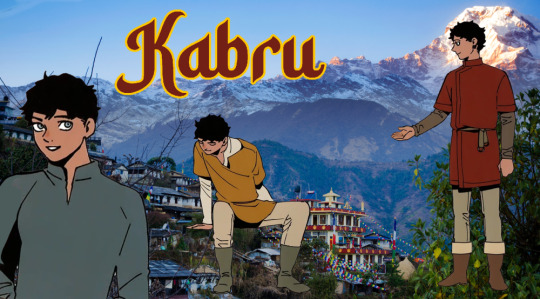
(UPDATE: Full version of this research is available here!)
Fun Dungeon Meshi facts! Kabru’s name is also the name of one of the peaks of the Himalayan mountain chain. It’s on the border between India and Nepal, which fits with Kabru’s skin and hair color (and texture). Also a lot of clothes and color choices Kui makes in the Daydream hour supplements really give me a Nepalese vibe, especially that red tunic. Lighter colored eyes are also not unheard of in that region, though obviously blue is still rare.
Utaya is also the name of a real place! It’s a small village (population of 98 people) at the foot of a mountain in the sub-arctic region in north-eastern Russia, and the name ‘Utaya’ is from the Yakut language, which has Turkic origins. Utaya also means ‘mandible’ in Swahili, and possibly is a name that means ‘Always bright’ in Hindi? Can’t confirm those last two.
Anyway all that to say that I HC Utaya having a culture influenced by Nepal and India, and I HC Kabru’s mom being named Annapurna, which is another mountain in the Himalayan range, named after the goddess of food - what could be more fitting for Dungeon Meshi, right?
I also HC Kabru having a big dick cuz he’s named after a mountain and quite popular with the ladies but that’s really not that important i just think it’s funny
Some pics of Nepalese and Indian men that reminded me of Kabru under the cut, along with some more general pictures of the people of Nepal. Enjoy and do what you will with the fruits of my research!
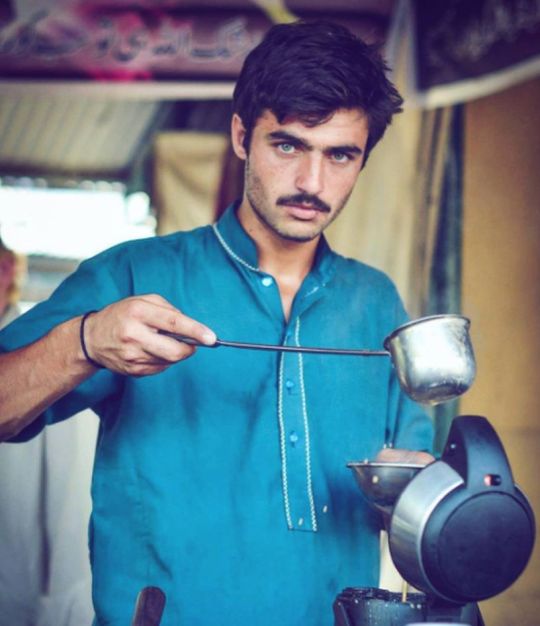
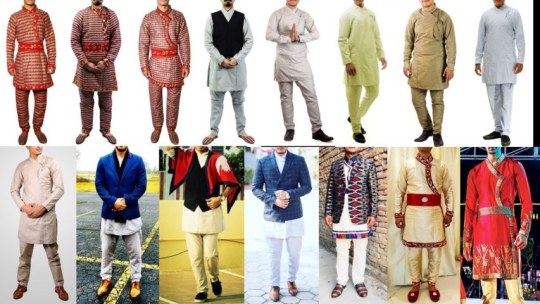
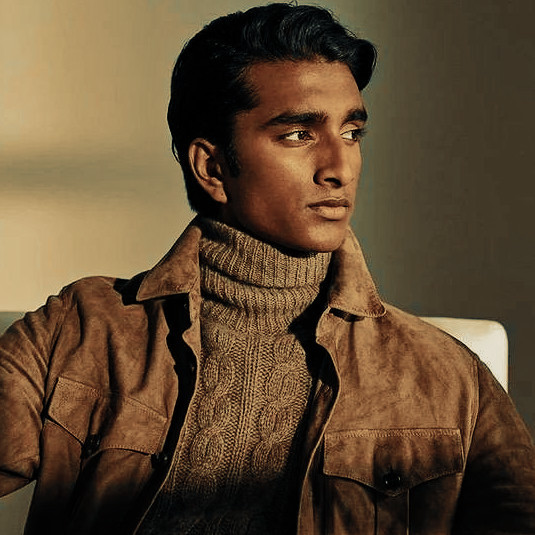
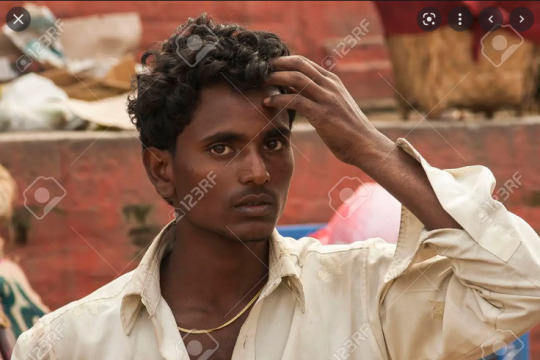
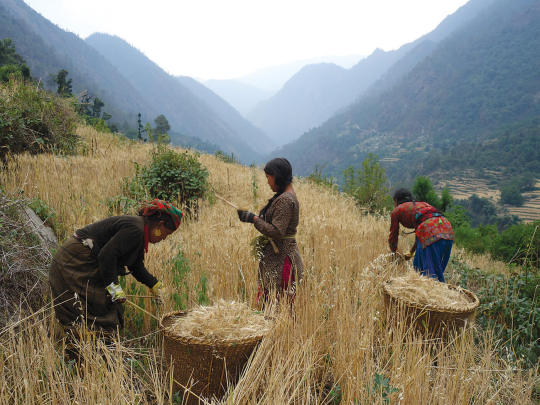

#dungeon meshi#delicious in dungeon#kabru#dunmeshi#ダンジョン飯#headcanons#my stuff#Dungeon Meshi Research
219 notes
·
View notes
Note
As someone whos been following you since back in the og hetalia days and followed your north korea ask blog, i do remember you mentioned you got to live in south korea! As someone who really wants to go, can you tell me what it was like? What did you enjoy about it? Have a good rest of your day!! 😊
Yes, I did! I lived there for two years (during covid, so my experience is probably quite different from many others).
Things I liked: I lived in a high rise apartment, with basically everything I needed within walking distance. For anything that wasn't within walking distance, public transport was amazing (and cheap!). I had a couple bus routes I liked to take to bigger department stores like E-mart (which are basically a whole mall in one store) and a public park with hiking trails. There are tons of cool historical landmarks. More than once I had been out hiking on a trail and stumbled upon temples I had no idea were there. I distinctly remember hiking Jirisan at like 4 in the morning to catch the sunrise and heard a gong in the distance on the way up. Then out of the fog emerged this temple where the monks were doing their early morning ceremonies. Felt like I was in a ghibli movie or something. The spring bloom and fall colors are AMAZING and one of the few things I could consistently enjoy during covid. Also, if you're an uber eats person, Korea has an app which I can't remember the name of, but nearly every restaurant was on the app and offered delivery. And everything was delicious. BAKERIES everywhere. Little farmers/street markets. I had no shortage of Korean, Japanese, Turkish, Indian, American, basically any nationality of food. I think the only thing I didn't see a lot of that I kind of missed was Mexican. I can read hangul but only speak a little Korean (about enough to introduce myself and order at a restaurant), but most people speak at least a little english. Most street signs are also in english, but if you end up somewhere where they aren't, being able to read hangul would come in handy. Most people are very friendly. I had a random guy, English name David, decide he was my tour guide and show me and my partner the best way up a very popular mountain. Also got adopted by more than one Korean ajumma who would give me fruit and homemade goodies and ask me when I was gonna have kids. Random people helped me unload the massive cat tree i bought at a pet store off the bus, which was very kind of them and much appreciated.
Things I didnt like: covid obviously, and covid probably informed a lot of the policies I didn't like while I was there. There were some places closed to foreigners, and some things I just couldn't do as a foreigner. Some tickets (for like trains and ferries and campgrounds and stuff) could only be purchased in person, while Koreans are able to purchase them online. I don't know if this was just a covid thing. The smog got really bad sometimes. Once the summer monsoon starts, it rains for days, and can get really hot and humid.
Idk if that really helps but I hope that at least gives you a sense of the vibes! I hope you have a great time in this wonderful country!
2 notes
·
View notes
Text
Best Banquet in Little India Singapore | kailashparbat
Discover a world of delectable cuisines at Kailash Parbat - your one-stop solution for food delights, outdoor catering, and banquets
#pani puri restaurant#chaats online shopping#Best Chaats in Singapore#chaat dining#Best Chaats in Little india Singapore#chaat restaurant#Best Banquet in Little India Singapore#Best Vegetarian Catering in Little India Singapore#Good Vegetarian Catering in Little India Singapore#Best Restaurant in Little India Singapore#Good North Indian Restaurant in Singapore#Good Restaurant in Little India Singapore#Best North Indian Restaurant in Singapore#Best Dining in Little India Singapore#Good Restaurant in Singapore#Popular Indian Restaurant in Singapore#Authentic Indian Restaurant in Singapore#Good Indian Restaurant in Singapore#Best Indian Restaurant in Singapore#Popular Indian Food Singapore#Best Restaurant in Singapore#Best Vegetarian Restaurant in Singapore#Popular Restaurant in Singapore#Best Dining in Singapore
0 notes
Photo
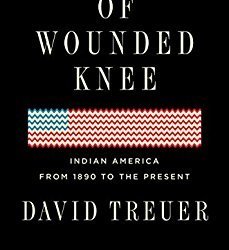
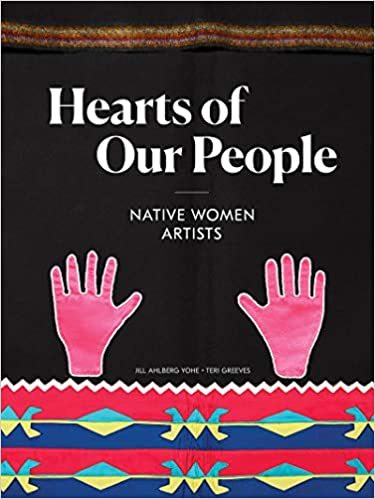
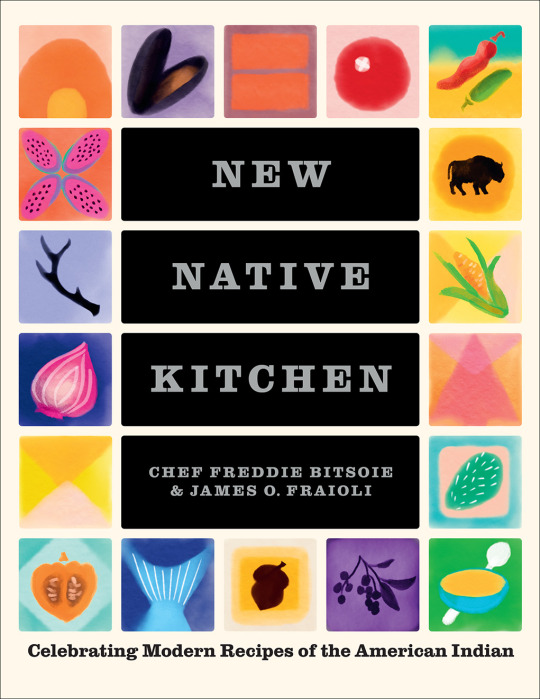
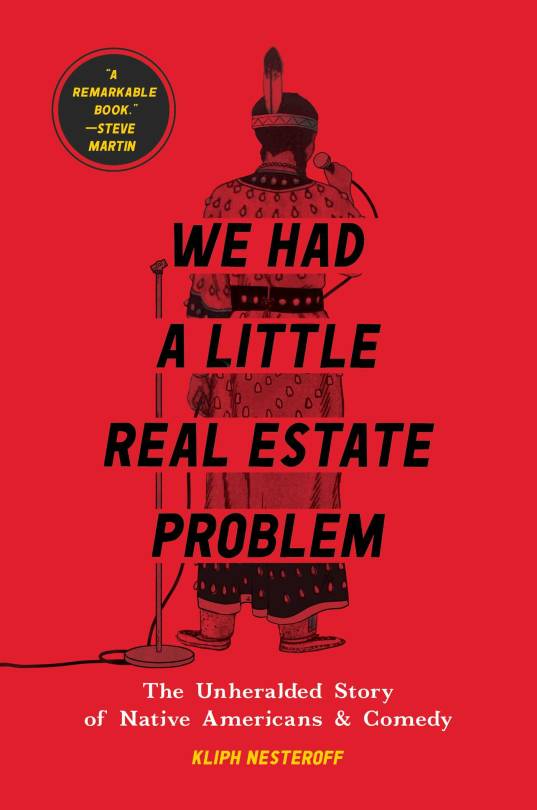
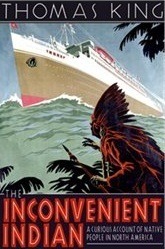
Native American Heritage Month: Nonfiction Recommendations
Celebrate Native American Heritage Month by checking out one of these nonfiction recommendations from your local library!
The Heartbeat of Wounded Knee by David Treuer
The received idea of Native American history has been that American Indian history essentially ended with the 1890 massacre at Wounded Knee. Growing up Ojibwe on a reservation in Minnesota, training as an anthropologist, and researching Native life past and present for his nonfiction and novels, David Treuer has uncovered a different narrative. Because they did not disappear - the story of American Indians since the end of the nineteenth century to the present is one of unprecedented resourcefulness and reinvention.
Hearts of Our People: Native Women Artists edited by Jill Ahlberg Yohe
This volume explores the artistic achievements of Native women and establishes their rightful place in the art world, including works of art from antiquity to the present, made in a variety of media from textiles and beadwork to video and digital arts. It showcases artists from more than seventy-five Indigenous tribes to reveal the ingenuity and innovation that have always been foundational to the art of Native women.
New Native Kitchen by Freddie Bitsoie
From the former executive chef at Mitsitam Native Foods Café at the Smithsonian’s National Museum of the American Indian, this book is a celebration of Indigenous cuisine. Accompanied by original artwork and offering delicious dishes like Cherrystone Clam Soup and Spice-Rubbed Pork Tenderloin, Bitsoie showcases the variety of flavor and culinary history on offer from coast to coast, providing modern interpretations of 100 recipes that have long fed this country.
We Had a Little Real Estate Problem by Kliph Nesteroff
It was one of the most reliable jokes in Charlie Hill’s stand-up routine: “My people are from Wisconsin. We used to be from New York. We had a little real estate problem.” In this account, acclaimed comedy historian Kliph Nesteroff focuses on one of comedy’s most significant and little-known stories: how, despite having been denied representation in the entertainment industry, Native Americans have influenced and advanced the art form.
Inconvenient Indian by Thomas King
In this account, Thomas King offers a deeply knowing, darkly funny, unabashedly opinionated, and utterly unconventional account of Indian–White relations in North America since initial contact. Ranging freely across the centuries and the Canada–U.S. border, King debunks fabricated stories of Indian savagery and White heroism, takes an oblique look at Indians (and cowboys) in film and popular culture, wrestles with the history of Native American resistance and his own experiences as a Native rights activist, and articulates a profound, revolutionary understanding of the cumulative effects of ever-shifting laws and treaties on Native peoples and lands.
#Native American Heritage Month#Native American Authors#native american history#nonfiction#book recs#book recommendations#reading recs#reading recommendations#library books#TBR pile#tbr#to read#booklr#book tumblr
102 notes
·
View notes
Text
Most Popular And Best Dishes In India By Akshay Mehndiratta That You Must Try

India is a country where you can taste a wide variety of famous dishes and you will find many food lovers relishing the delicious flavors. In India, many food bloggers from abroad come to enjoy the famous and delicious food of the country. One such blogger is Akshay Mehndiratta, who loves not only cooking but also eating. He travels to the most famous states of India and samples their famous dishes. Through his blog, he shares recommendations for dishes he savors during his journeys, tempting your taste buds. These famous dishes are a must-try!.
1. Biriyani
Biryani, a favorite dish in India, holds a special place in the culinary world with its rich taste and aromatic spices. Food lover Akshay Mehndiratta enjoys a variety of dishes ranging from juicy chicken biryani to delicious egg biryani, delicious mutton biryani to juicy prawn biryani and even the vegetarian flavor of mushroom biryani. Each variation of biryani gives a completely unique blend of spices and ingredients, reflecting the cultural richness and culinary history of India. From aromatic Hyderabadi Dum Biryani to spicy Kolkata Biryani and aromatic Lucknowi Biryani, the surrounding specialties enrich the biryani landscape, tantalizing the senses and leaving diners yearning for more. Since Akshay loves the diverse flavors of biryani, he recommends this biryani to everyone.
2. Vada Pav
Vada pav is a vegetarian dish that brings water to the mouth. It is a famous dish in India and people are relishing this dish. Akshay says that a classic street food dish from the busy streets of Mumbai is made from spicy potato, coated in gram flour, and served with chutney and pav. This highly satisfying snack embodies the creativity of Indian street food culture, which Ashok Vaidya started selling outside the Dadar railway station in 1966. It has now reached the hearts and minds of the people and is loved by them.
3. Masala Dosa
Masala Dosa, an essential South Indian dish, is a favorite culinary treasure known for its crispy texture and delicious potato or vegetable filling. Foodie Akshay Mehndiratta also enjoyed this traditional dish, which consists of thin, golden-brown crepes in a lentil batter filled with a combination of fermented rice and spicy potatoes. Dosa is expertly folded and served with coconut chutney, spicy sambar and sometimes extremely spicy red chutney, making it a delicious dish. Be it breakfast or lunch, masala dosa never fails to create a sense of satisfaction, making it a favorite among foodies everywhere.
4. Chloe and Kulcha
Chole and Kulcha, a famous street food originating from the bustling streets of Delhi, captures the essence of North Indian flavors in a delicious and hearty snack. Chole is a spicy and tangy chickpea curry packed with aromatic spices like cumin, coriander and garam masala. This chole is served hot with kulcha. Kulcha is soft and fluffy leavened bread, often topped with ghee to make it delicious. Chole and kulcha together create a harmony of texture and taste that delights the taste buds. Akshay appreciates the culinary artistry behind this beloved street food that has made its way into the hearts and stomachs of foodies across India.
5. Kachori
Kachori, a favorite Indian snack loved for its crunchy exterior and delicious taste, is a recipe that thrills foodies across the country. Akshay Mehndiratta, deeply appreciate of traditional flavours, savors this iconic dish. Hailing from the streets of Rajasthan, Kachori is a fried flour pastry filled with a spicy mixture of lentils, peas or potatoes, flavored with aromatic spices like cumin, coriander and chilli powder. Served hot and crispy, kachori is often paired with spicy tamarind or mint chutney, which elevates its taste to new heights. Kachori, whether served as a snack or a full meal, never fails to evoke feelings of warmth and pride, making it a popular dish in Indian cuisine.
6. Bhelpuri
Akshay Mehndiratta loves Bhelpuri, a popular street food originating from the colorful streets of Mumbai. It is a beautiful combination of crunchy texture and spicy flavour. With a combination of ingredients — crunchy puffed rice, crunchy sev (thin sev made from chickpea flour), chopped onions, tomatoes and baked potatoes — served with spicy tamarind, or green chutney. this famous snack captures the spirit of Indian street food culture. You can enjoy this dish for a quick breakfast with family and friends, Bhelpuri embodies the spirit of culinary innovation and enjoyment that defines the bustling streets of Mumbai.
7. Misal Pav
Misal Pav is a Maharashtrian dish which is Akshay’s favorite dish. Originating in the colorful streets of Maharashtra, Misal Pav is a highly spicy curry prepared from sprouted moth beans, cooked in a rich and aromatic gravy with a blend of spices like cumin, coriander and turmeric. Served hot, the aromatic curry is garnished with crunchy farsan (fried salty snacks), finely chopped onions, clean coriander and lime juice, which adds a of texture and flavour. With a soft and buttery pav (bread roll), Misal Pav offers a satisfying delightful flavors in every bite.
8. Pav Bhaji
Pav Bhaji, a favorite street food from the bustling streets of Mumbai, It is Akshay’s favorite dish. This iconic dish includes a delicious and aromatic vegetable curry, called bhaji, which is prepared from a combination of mashed potatoes, tomatoes, onions, peas and capsicum, along with spices like cumin, coriander and garam masala. Bhaji cooked in an aromatic mixture of spices is served with smooth and buttery pav (bread roll), which is toasted with a generous amount of butter on a tawa. The dish is garnished with lemon, chopped onions and clean coriander, and it gives an unlimited taste pleasure in each bite.
Conclusion
Amidst the vibrant tapestry of Indian cuisine, Akshay Mehndiratta’s curated some list of dishes that everyone must taste it. From the aromatic allure of Biryani to the crunchy taste of Vada Pav, each dish has a unique taste that captures the essence of India’s diverse cuisine. Akshay’s passion for food and his deep appreciation for traditional flavors is reflected in every recommendation, inviting foodies on a culinary adventure from the congested streets of Delhi to the colorful lanes of Maharashtra.
If you are interested in learning more about delicacies, consider joining Akshay Mehndiratta’s journey. This journey will take you on a culinary adventure through the rich and diverse world of Indian cuisine, where you will experience the amazing flavors and health benefits of traditional Indian cuisine.
2 notes
·
View notes
Text

Chicken Momos
Chicken momos is a popular North-East Asian dish made of steamed or fried chicken filling stuffed into a dough wrapper. These are like dumplings and are usually served with spicy sauce. The popularity of chicken momos is also increasing in Indian street food culture and it has become a favorite snack option.
#momos#chicken momos#fast food#jung food#cooking#foodie#food photography#recipe blog#recipes#snacks#kitchen#viralpost#home cooking#recipe
3 notes
·
View notes
Note
Sorry to correct you but. Samosa is an indian dish not Kenyan
Hello anon! LOL okay I never expected to get into Samosa Discourse on my Star Trek blog but I happen to love food and history and the history of food so here we go😂
You are correct that samosas are not native to Kenya- and yes, India is by far the country most associated with samosas in the popular imagination (for good reason, samosas are pretty much omnipresent throughout India!) But while samosas are not originally from Kenya, that doesn't mean (imo at least) that they cannot be counted as part of Kenyan cuisine. (Which I didn't even necessarily do in that post, but I understand your position so I'll elaborate on those terms!)
Kenya is a multi-ethic country made up of several African peoples and migrant communities, including Kenyan Asians. Now, the history of South Asians living in/trading with East Africa goes back centuries, but there was also this huge (and deeply colonial) boom in the Asian population during the late 1800s-early 1900s when the British sent tens of thousands of indentured Indian labourers to Kenya to build the Uganda railway. (There is a LOT more history I could get into re the British East Africa Protectorate and the complicated social dynamics between African & Asian communities at the time, but that's not really relevant to samosas so I'll spare you.)
Anyway, modern day Kenya still has a considerable South Asian population, and as such (again not getting into the more complicated social dynamics here), Kenyan cuisine has a lot of Indian (and Arab) influences. But beyond that- Swahili culture(s) and cuisine(s) evolved over centuries of interaction between the various (predominantly Bantu) peoples of East Africa and traders from West, Central & South Asia (who brought in- among other things- their own spices), so cultural intermingling has always been a staple of the East African coast (which is geographically SO close to Asia!) If you were to walk around some of the bigger, more Asian diaspora-heavy cities of Kenya, like Mombasa or Nairobi, you'd find plenty of chicken/fish-based coconut curries & stews that strongly resemble Indian ones- as well as rice-based dishes like pilau & biriyani, rotis, chapatis, bhajias (called 'bajjis' in certain parts of India), kheemas, kebabs- and yes, samosas. Or sambusas, as they're often called in Kenya.
And what's more- the samosa (originally 'samsa' iirc) likely originated in Central Asia in the first place! It still goes by other names in West Asia and North Africa too; as do several other dishes-in-common. In fact, kuku paka (a dish I mentioned in the post that prompted this ask) is a Kenyan chicken curry with distinct Indian & Arabic influences. So if samosas can qualify as Indian cuisine (which, they undoubtedly do), imo they can qualify as a part of Kenyan cuisine too! Anyway I'm truly sorry I let this ask get SO far away from me lmao, I guess I've always felt a bit alienated by this growing tendency in Asian & African communities to sort of rigidly and unquestioningly (even proudly) uphold colonial divides when our cultures are actually so sprawling and ancient? Like sure, we are not monoliths, and it is important that people learn that- but also, so many political borders across both continents didn't even exist as they are today even a hundred years ago. It's so cool how much there is in common! Food, like so many other aspects of culture, is often migratory and full of varied influences, and that's just so deeply human and beautiful and fascinating to me
#nebulouscoffee on tumblr: come for the trekposting stay for the samosa lore apparently? lol#apologies to anyone who actually read all this rambly nonsense wish I could give you a sambusa/samosa as a reward#also anon I know you meant well and TRULY no hard feelings so pls don't take this the wrong way but. this ask made me giggle#I don't know if you're indian or just a concerned (white) citizen but speculating actually cheered me up on a Trying night so thank you!#in either case: you needn't worry!! I'm not out here on a mission to spread samosa misinformation on my star trek blog peace and loveee#(in all seriousness I'm very sorry if this reply came off as condescending or dismissive I promise it wasn't at all meant that way)#((might delete later btw just putting that out there))
15 notes
·
View notes